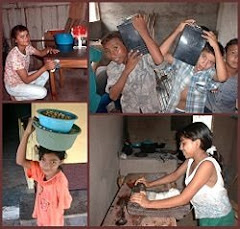It is almost impossible to set a global standard for child labor. The majority of child labor is agricultural. The traditions of rural life often include children in the daily chores of a family farm. In industrial areas children are desired as laborers because they are inexpensive and do not assert their rights in the ways adult workers do. In many accounts children who work in factories are subject to long hours of physical labor without much pay, but full eradication of child labor from these factories may make the lives of the children even more difficult. The fragile economic stability of their household would likely fail, and the child would be forced into alternative labor that may be even more dangerous.
Not all child labor is this debatable. Many children are trafficked as sex workers, or as modern day slaves. Slavery exists for children who are sold to pedophiles or to plantation usually harvesting cash crops such as cotton, cocoa, tobacco, and sugar cane. Child slaves work in very dangerous conditions with little or no regard for their lives or well being, and they do not personally profit from their labor. Children have rights, and to assert these rights children must have agency. Slavery of children is a clear exploitation of the most vulnerable members of society. Neither the children, nor the families are given any agency.
An integrated approach to the issue of child labor will be the most effective. The strongest policies must be used to combat child slavery as sex workers, field workers, and factory workers. When looking at other types of child labor policy makers must take into account the specific circumstances of the region. It is not enough to place harsh fines on those who use child labor. Protection is also needed for children and their families. Educational stipends have been used in some countries, but the countries that need them the most could never afford them. Even with stipends most children would make more money working. Corporations must be held accountable for their treatment of workers, especially children. Consumers should be more aware of the conditions that produced their clothes and their food. There are fair ways to treat workers, but this work is viewed through cultural norms. A shift in child labor policies will be different in every country.




